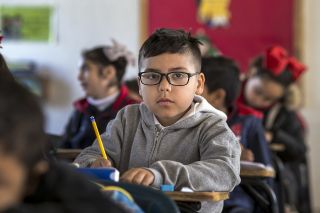Bullying
Bullying by Peers and Siblings
For some children, neither home nor school is a safe space.
Posted June 14, 2023 Reviewed by Davia Sills
Key points
- Perceptions of the seriousness of peer and sibling victimization differ for the same exact behavior.
- Sibling bullying, like peer bullying, is linked with worse mental and physical health.
- Sibling aggression can lead to peer bullying. Thus, anti-bullying efforts should include siblings.

Significant efforts have been invested in the prevention of peer bullying. And with good reason: Peer bullying in childhood and adolescence is associated with worse mental health, including depression, low self-esteem, and suicidal ideation. Peer relationships are pivotal in children’s and adolescents’ daily lives. That includes sibling relationships as well. But when it comes to peer bullying, siblings are often overlooked.
Recent research shows that peer bullying prevention efforts should include siblings. As one of the most important relationships in children’s lives, it is with siblings that children learn interpersonal skills, such as seeing another’s point of view and resolving conflicts. Children also can learn aggressive behaviors. In fact, research shows that sibling bullying frequently happens and lays the foundation for peer bullying.
National surveys show that victimization by a sibling is actually more common than peer victimization. Sibling victimization peaks during early and middle childhood and decreases in adolescence, reaching rates as high as 46 percent for six- to nine-year-olds. Peer victimization, however, peaks in middle adolescence at about 22 percent and then declines.
Is Sibling Bullying Harmful?
Perceptions of the seriousness of peer and sibling victimization differ for the same exact behavior. Sibling and peer bullying both can include physical assault, property destruction or theft, and psychological aggression, such as persistent threats or intimidation. These behaviors between siblings are often ignored or minimized, but they are not harmless.
Sibling bullying, like peer bullying, is linked with worse mental and physical health in childhood, and such effects persist even into adulthood. The centrality of siblings and peers in children’s lives makes them both important for mental health.
Sibling aggression can lead to peer bullying. Chronic victimization by a sibling more than doubles the risk for peer bullying in childhood and adolescence. Fifteen percent of children and adolescents are bullied by both peers and a sibling. Thus, for some, neither home nor school is a safe space. In fact, children and adolescents victimized by a sibling and peers are in greater mental health distress than victims of peer bullying alone.
What Should Educators Know?
Sometimes teachers and school personnel are the first to recognize that bullying is happening at home. In some cases, concerned educators may encounter resistance from parents. Parents may not view what is happening between their children as problematic or may believe that such behavior is a private family matter.
When peer bullying is identified in school, it is important for educators to recognize that such behavior may be occurring at home too. With such recognition, steps can be taken to prevent and stop the occurrence of sibling and peer bullying and improve children’s and adolescents’ mental health.
Current awareness about peer bullying needs to be broadened to include consideration of sibling bullying. Rather than ignoring or dismissing sibling aggression as harmless rivalry, it should be viewed as a possible pathway to peer bullying and other problems. The overlap can be connected to common family risk factors, such as family adversity, child maltreatment, and witnessing family violence. Educational programs on peer bullying should be adapted to include significant content on sibling aggression in their lessons and activities.
In cases of sibling abuse, affected children may need trauma-informed care and referral to child welfare and mental health professionals. Children can be encouraged to talk with their pediatrician, school counselor, or nurse. Parents can also be encouraged to reach out to these sources, as well as to a therapist or local family resource center for help.
Reduction or elimination of peer bullying will likely not succeed unless perceptions of sibling aggression change. Sibling aggression is not harmless, and responses to the very same aggressive behaviors displayed between siblings and peers should be similar. It is critical that information about sibling bullying is included in peer bullying education and programming efforts to promote children’s and adolescents’ healthy development.
References
Tucker, C. J., Finkelhor, D., Shattuck, A., & Turner, H. (2013). Prevalence and correlates of sibling victimization types. Child Abuse & Neglect, 37(4), 213-223. https://doi.org/10.1016/j.chiabu.2013.01.006
Tucker, C. J., Finkelhor, D., Turner, H., & Shattuck, A. (2014). Sibling and peer victimization in childhood and adolescence. Child Abuse & Neglect, 38(10), 1599-1606. https://doi.org/10.1016/j.chiabu.2014.05.007
Tucker, C. J., Finkelhor, D., & Turner, H. (2019). Patterns of sibling victimization as predictors of peer victimization in childhood and adolescence. Journal of Family Violence, 34, 745-755. https://doi.org/10.1007/s10896-018-0021-1
Tucker, C. J., Finkelhor, D., & Turner, H. (2020). Family predictors of sibling versus peer victimization. Journal of Family Psychology, 34(2), 186-195. https://psycnet.apa.org/doi/10.1037/fam0000592


